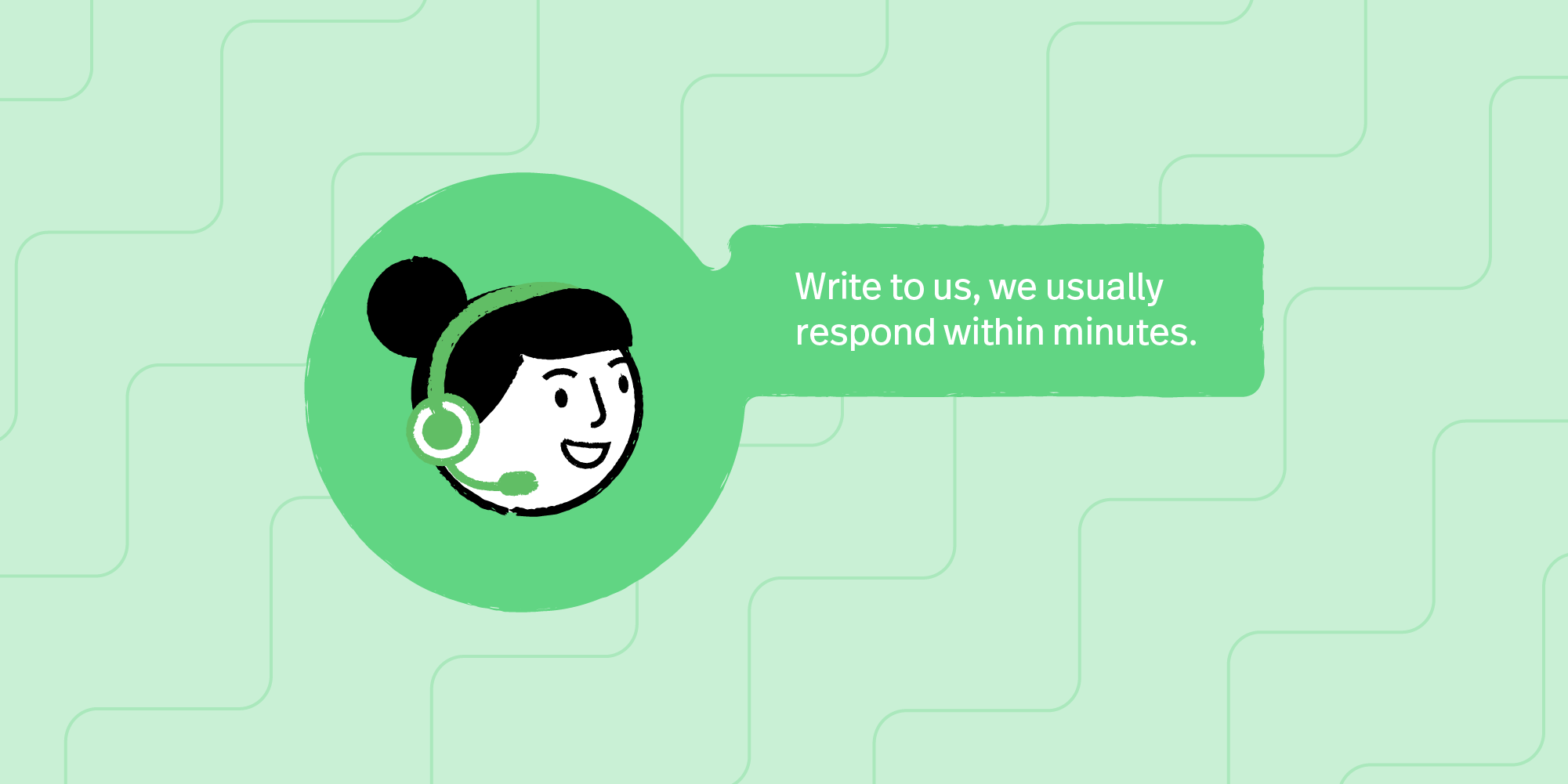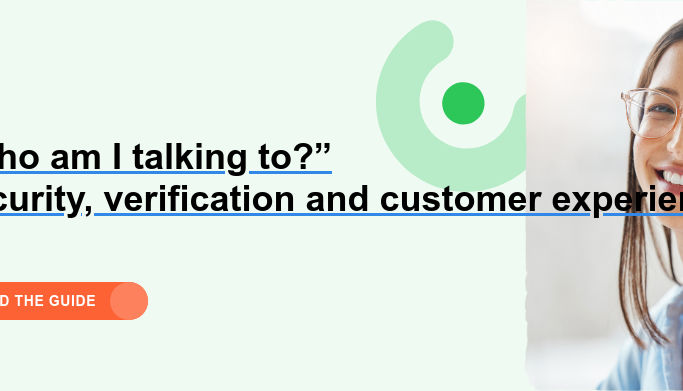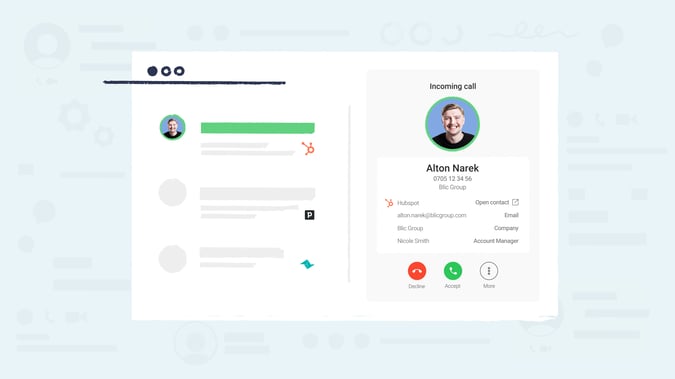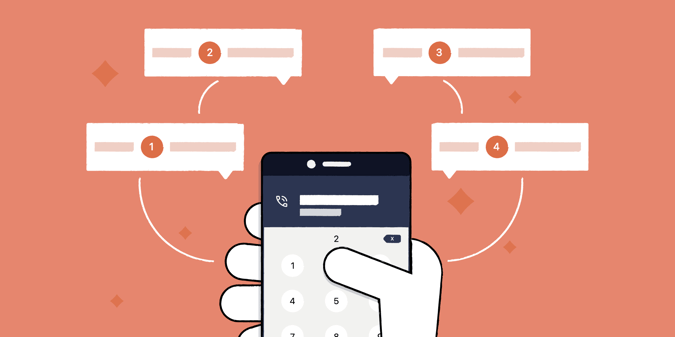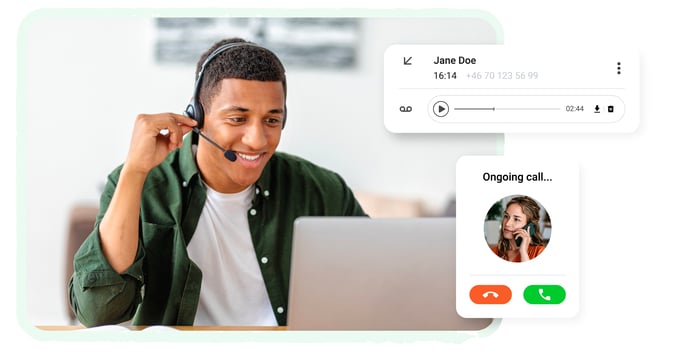Waiting times will always occur, but how can you turn waiting into a positive customer experience? We've investigated the difference between actual and perceived wait times and how you can use live chat to turn that difference into an advantage.
Lessons from the offline world
Customers will sometimes have to wait no matter how big your team is and how hard you're working. That's why it's essential to focus on reducing wait times and the frustration that often comes with waiting.
Things like digital signage, entertainment, distractions, and upselling while waiting can reduce the perceived wait time in physical stores. It has, therefore, been an essential part of stores and other commercial happenings. But wait and response times online haven't been given the same attention, which is rather strange, considering that we only have a short time span to establish a connection with our visitors online.
The difference between actual and perceived wait time
"Wow, did I only wait for 20 minutes? It felt like an eternity!" We've all said those words. But we'd rather not hear those words from our customers, right?
In The Psychology of Waiting Lines, David Maister writes about the difference between actual and perceived wait time. It's a significant difference that can affect how your customers experience their contact with your company. A wait perceived as short and motivated will leave a positive feeling. And a hold perceived as long, stressful, and unnecessary will leave a bad impression.
David Maister lists 5 different factors that affect how we perceive waiting time:
-
Stress and anxiety make waiting seem longer
-
Active time feels shorter than passive time
-
Uncertain waits seem longer than expected waits
-
Waits with no explanation feel longer than explained waits
-
Waiting pre-process feel longer than waiting in-process
1. Stress and anxiety make waiting seem longer
Anyone who has ever waited anxiously at an emergency room would probably agree with this statement. The more you're in a hurry, the longer everything seems to take. But it doesn't have to be a matter of life or death for a wait to produce anxiety and stress. It could just be that you're late for a meeting and need to order a cab.
Offering your customers as many ways to reach you as possible and the opportunity to do so at the time and place they find most convenient reduces stress and irritation. Adding live chat to your existing channels is a splendid way to do just that.
Read more: 4 reasons you need live chat on your website
2. Active time feels shorter than passive time
David Maister describes how occupied time feels shorter than unoccupied time. Most of us are familiar with this: when we’re busy, time flies. If all we’re doing is waiting, the experience is the opposite. This is one of the reasons wait time in an online chat often feels less frustrating than in other channels – because it’s easy to do other things while waiting.
In a survey by Econsultancy, as many as 51% of respondents preferred live chat to other channels as it allowed them to multitask. A crucial benefit of live chat is that customers can do other things while waiting.
Read more: 10 tips to improve your live chat
3. Uncertain waits seem longer than expected waits
Ever been to Disneyland? Did you notice how the expected wait is always clearly announced at each attraction? There's a good reason for that. Not knowing how long you'll have to wait makes the wait feel much longer. That's why theme parks show how long the wait for each rollercoaster is.
Stating the wait time is a way of giving your visitor the power to choose. It's proven to reduce frustration and stress during the wait and improve the overall customer experience. Therefore, an intelligent live chat should also show the long waiting time when you call.
4. Waits with no explanation feel longer than explained waits
"All of our agents are currently busy. Please hold, and we will answer your call as soon as possible." Sounds familiar? These words may seem excessive, but they are there for a reason. We want to know why we are kept waiting and being reassured that our turn will come – as soon as possible. Hearing this makes us more patient and less frustrated. The same effect can be achieved in your live chat with smart messaging.
5. Waiting pre-process feel longer than waiting in-process
Imagine stepping into a restaurant. Nobody notices you. You stand there waiting to be seated, but nothing happens. It won't be long before this makes you annoyed. A couple of more minutes and you'll probably leave to find a better place to eat. If, instead, you are greeted at the door and immediately shown a table, it changes everything. You know the process has started and that you will be served.
With the restaurant analogy in mind, let's consider the difference between offering live chat and email forms. The experience you get from sending an email, not knowing if or when it will be read or responded to, is actually similar to that of not being seated at a restaurant. Not knowing if the food is ever coming, there's a risk your visitor will simply turn elsewhere.
On the other hand, a chat that's been initiated and received a response gives the reassuring feeling of being in process. That means we relax, become more patient, and the experience becomes more positive.
The solution: A better customer experience with live chat
As customers will continue to call, and you won’t be able to take all calls straight away, there will be queues at some point. A professional welcome message can set the right tone and inform callers about waiting times and what number to press to be placed in the correct queue. And with proper call queue management, you can reduce how long they have to wait.
Several studies show that today’s customers appreciate live chat and prefer it to other channels. It can be a great way to handle some cases more quickly, meaning, customers don’t have to wait in a telephone queue and can instead get help directly on your website.
Telavox chat widget is free, easy to install on your website, and can be tailored to your company’s graphic profile. And as we’ve seen, that’s crucial in reducing stress and irritation – creating the best possible customer experience.

